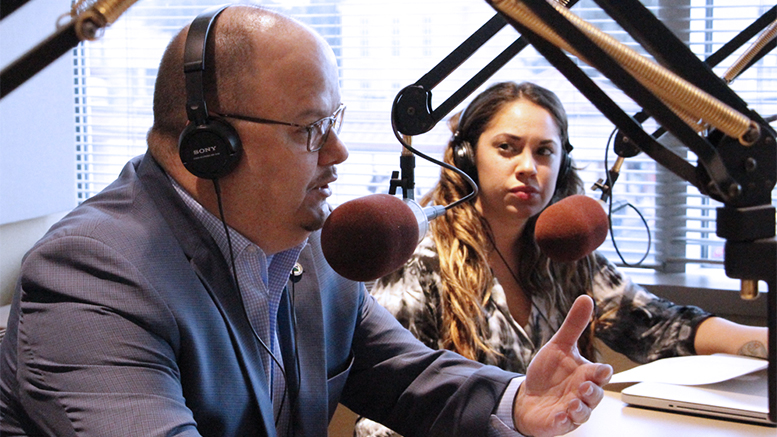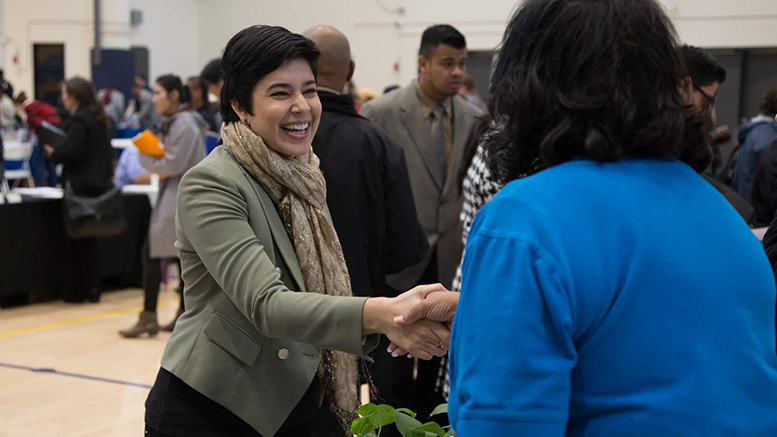Those who picture a “gray-haired, white, heterosexual male” when they are about to meet a community college president are not necessarily wrong, but the assumption is increasingly out of date in 2019.
Given the diverse populations they serve, two-year institutions are striving to recruit and retain a diverse set of leaders with similar life experiences to others on campus.
“I don’t know how a community college can do very well in meeting its organizational performance goals without recognizing, celebrating and tapping into the diverse talents, skill sets and viewpoints of faculty, staff and students,” says Shouan Pan, chancellor of Seattle Colleges and president of the National Asian/Pacific Islander Council. “The students we serve are so diverse, the faculty are so diverse, that we need to have senior leadership who understands the needs, expectations and talents among students and employees.”
Editor’s note: This excerpt comes from the June/July edition of the Community College Journal, the award-winning magazine of the American Association of Community Colleges.
While they have enjoyed encouragement and mentorship along the way, community college presidents who are female, people of color and/or members of the LGBTQ+ community also say they continue to face barriers and challenges along the way. For example, as a 33-year-old woman of color who is president of Los Angeles Southwest College, Seher Awan says she’s often judged on her clothing or hair, has heard people have called her “renegade” behind her back, and has been addressed as “young woman” in high-level meetings.
“As a younger woman of color in a predominantly male role, my vocalness often comes across, and it’s difficult for people to take,” she says. “I don’t think I’m disrespectful, but I’m paid to advocate for students and the college, so I’m going to speak up when I need to. … It’s unfortunately not anything new, but it’s about being able to remember why I’m here: to serve the students and the college.”
Rising above
Montgomery College President DeRionne Pollard, who is also president of the American Association for Women in Community Colleges, has felt similar slights as a college leader who is both African-American and lesbian.
“You oftentimes have people questioning your legitimacy,” sometimes in ways that seem phrased as compliments, she says. “People will say, ‘You’re so articulate.’ Why would I not be articulate? I have a doctorate in education. We know that’s code language. People are oftentimes unprepared for you to step into a space. They’re constantly discounting you.”
Issues of sexuality sometimes conflict with other people’s religious beliefs, and Pollard says she tries to be respectful — while also insisting on respect for herself.
“It’s a constant bartering of your soul,” she says. “You have to figure out how you’re going to show up in any particular space.”
Merrill Irving, Jr., president of Hennepin Technical College (HTC) in Minnesota, remembers a private dinner with four CEOs who were supporters of the college, one of whom made a comment about “the Supreme Court, and those gays,” unaware that Irving is gay.
“The challenge is, do I engage in LGBTQ education at that time?” says Irving, the first openly gay and married president in the Minnesota state system. “Or do I have to make the decision to continue to do my fundraising and represent the college? I chose to represent the college and bring in those dollars on behalf of the students.”
Irving has faced similar decisions as an African-American who became the third president of color at HTC. On one of the college’s campuses, he discovered a faculty member who had used a poster of former President Barack Obama as a dartboard, which Irving had removed.
“It was challenging,” he says. “I was a new president. But we have changed the game. This is a great place.” At a recent lunch-and-learn about diversity and inclusion, “The room was packed. That is such a turnaround from four years ago. We’ve done a lot of transformation.”
The importance of diversity
Community colleges are increasingly recognizing that diverse leadership is needed to reflect and honor their student and faculty populations.
“Students need to feel like they’re welcomed,” says Robert Vela, president of San Antonio College and head of the National Community College Hispanic Council, an AACC affiliate council.
“If you don’t look like them, if you don’t share similar backgrounds, if you don’t understand housing and mental health issues, and substance abuse issues — it’s important that we don’t take the approach that ‘this is a learning institution, so you must put that all aside.’ It’s going to enter your classrooms. It’s going to spill over,” he says.

San Antonio College President Robert Vela
Seeing campus leaders and faculty who reflect them gives students a sense of hope, says Awan, a community college graduate herself.
“I remember certain individuals I met — seeing them in leadership roles made it easier for me to imagine being in one,” she says. “It gives them role models, and it gives them mentors who they can look to for help and support. As a young woman of color in this role, I can speak to my personal experiences and things I’ve observed.”
Diversity of thought and lived experience strengthens any organization, Pollard says.
“We should be a reflection of the community we serve, both locally and at large,” she says. “At Montgomery, we’re gloriously diverse, with 72 percent students of color. It’s important that we are as intentional as we can be to have employees who reflect that student population, so they have empathy and awareness.”

